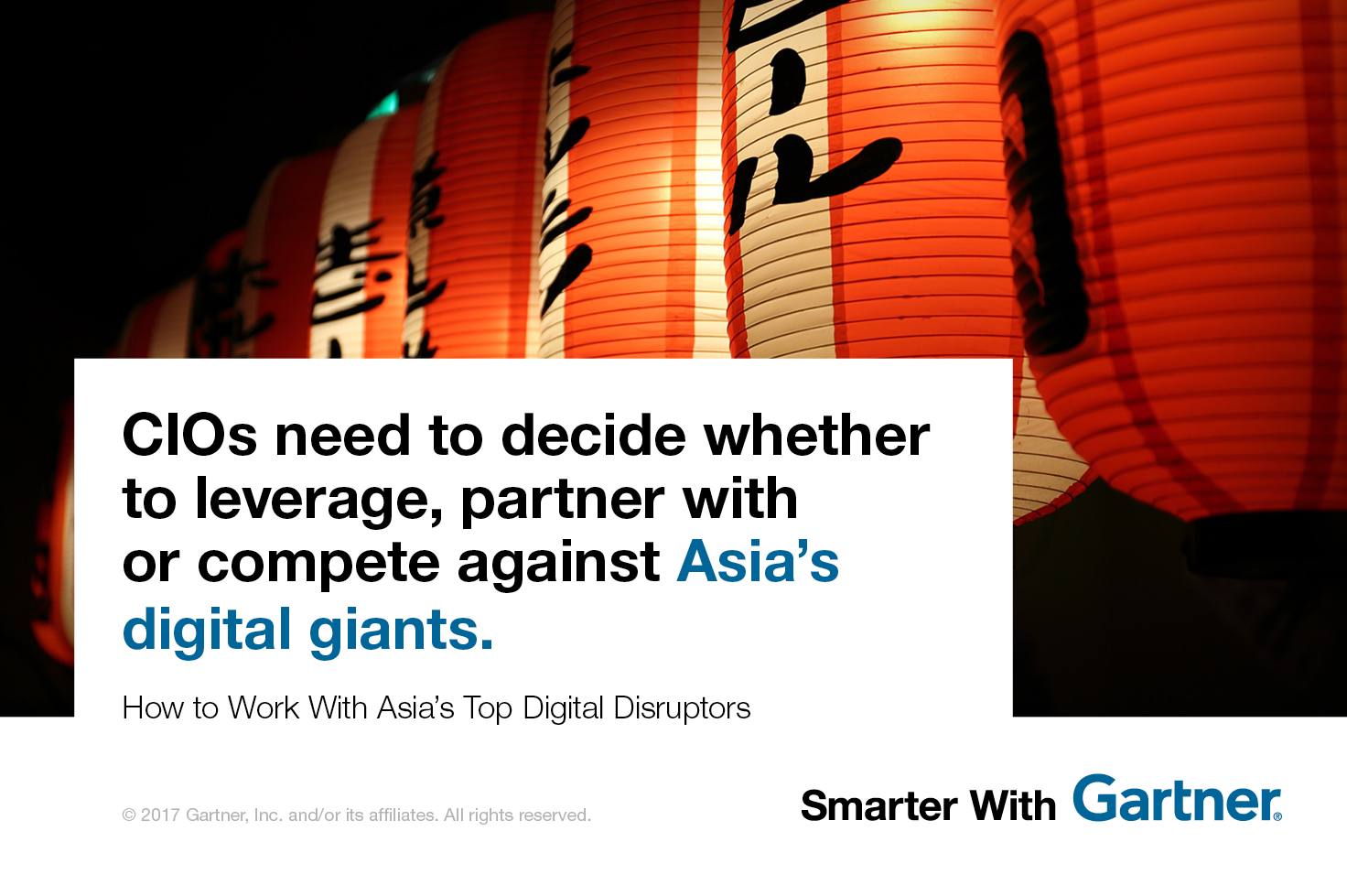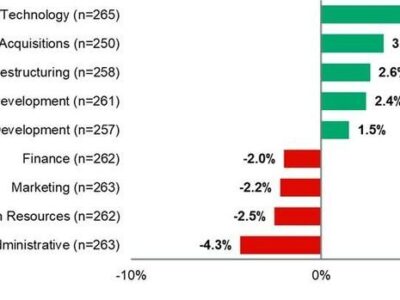CIOs need to decide whether to leverage, partner or compete against Asia’s digital giants.
The trio of Chinese digital giants — Baidu, Alibaba and Tencent — is already causing a significant amount of disruption across search, social, commerce, payment and artificial intelligence on a global scale. Gartner predicts that by 2020, these companies will be involved with 50% of all digital interactions in China, and they have one goal in common — to expand aggressively into new markets.
While the strategies of U.S.-based digital giants like Google, Facebook and Amazon are well known to most senior executives, those in Asia are much less familiar. Gartner has developed a top ten list of Asia’s digital disruptors, comparing their impact across four major areas — technology, business, industry and society – with the aim of helping global CIOs understand them better.
CK Lu, research director at Gartner, says these companies represent both an opportunity and a threat to global enterprises that are building or expanding a digital business.
“Identify and understand these potential business partners, suppliers and competitors as early as possible and actively decide how you’ll collaborate with or compete againstthem,” he says.
How to respond
- Leverage: Lu says if your business has operations in Asia/Pacific, it could be at a disadvantage using U.S. or European suppliers and partners. Redesign your IT infrastructure by leveraging Asian digital businesses if your revenue, customers or clients are weighted toward Asia. Consider switching to China-based cloud services that can operate in China, for example, instead of using global services that face limitations, either from regulation or localization.
- Compete: Most Asian digital disruptors have so far sought to take over consumer areas, such as homes and transportation. However, digital giants are now moving beyond B2C to B2B, government and into the enterprise. “This provides a window of opportunity to build a digital platform or lead a digital ecosystem,” Lu says. “If your enterprise has a very strong brand and relationships with customers and partners, re-evaluate old enemies and build an ecosystem to jointly compete against the digital disruptors.”
- Cooperate: Global enterprises have some advantages that can be used to build a cooperative relationship with digital giants in Asia, such as valuable internal data, global expertise and business presence outside Asia Pacific. Build a special task force to transform your businesses into digital to cooperate with digital giants in Asia. Recognize the cultural and working model differences because these companies are often more agile — and operate at a much smaller business scale.
“Prioritizing global IT investments will be incomplete without a thorough study of Asia’s digital disruptors,” Lu says. “As Chinese and American digital giants battle to disrupt global markets, you can’t afford to sit on the sidelines.”

Gartner clients can read more in The CIO’s Guide to the Top 10 Digital Disruptors in Asia/Pacific by CK Lu et al.










